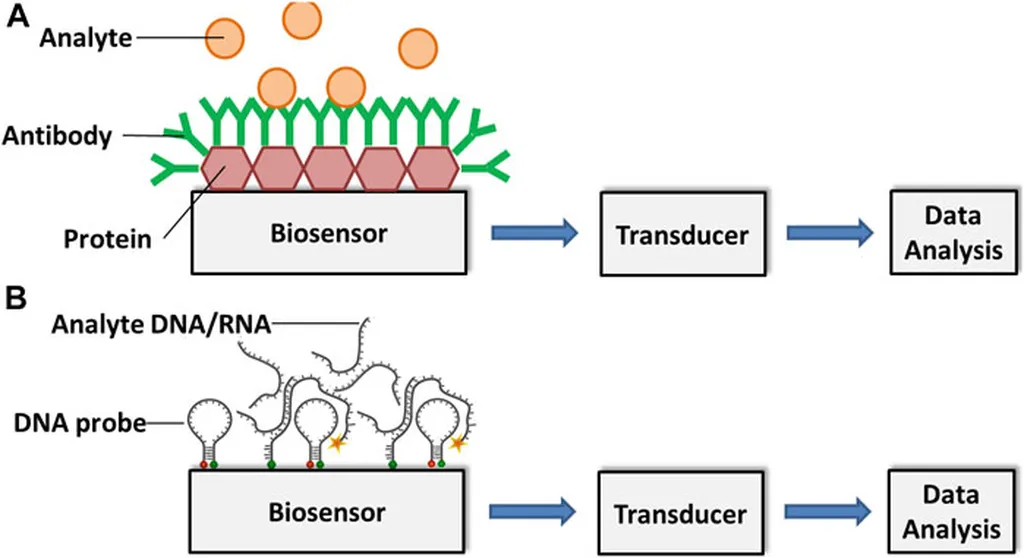In the heart of Queensland, Australia, a team of researchers led by Moutoshi Chakraborty from Griffith University’s Centre for Planetary Health and Food Security has developed a groundbreaking biosensor that could revolutionize the way we detect and manage plant diseases. The innovation, detailed in a recent study published in the journal *Biosensors* (which translates to *Biosensors* in English), focuses on ratoon stunting disease (RSD) in sugarcane, a stealthy bacterium that has been quietly wreaking havoc on global sugarcane yields.
RSD, caused by the bacterium *Leifsonia xyli* subsp. *xyli* (*Lxx*), is notoriously difficult to detect early on, as it often lacks visible symptoms. This cryptic nature leads to substantial undetected yield losses, impacting sugar production and, consequently, the energy sector that relies on sugarcane as a vital biofuel source. Chakraborty and her team have tackled this challenge head-on by developing a potential-induced electrochemical (EC) nanobiosensor that can rapidly and accurately detect *Lxx* DNA directly from crude sugarcane sap.
The biosensor’s design is a marvel of simplicity and efficiency. It integrates a boiling lysis-based DNA release from xylem sap, sequence-specific magnetic bead-based purification of *Lxx* DNA, and label-free electrochemical detection using a potential-driven DNA adsorption sensing platform. This eliminates the need for conventional nucleic acid extraction and thermal cycling, making the process faster and more cost-effective.
“The beauty of this biosensor lies in its simplicity and portability,” Chakraborty explains. “It’s designed for field deployment, allowing non-specialist users to conduct tests on-site without the need for complex equipment.”
The biosensor’s performance is impressive, with a detection limit of 10 cells per microliter and a broad dynamic range spanning from 10^5 to 1 copy per microliter. Its high reproducibility and strong correlation with qPCR data confirm its diagnostic accuracy. Field validation using genetically diverse sugarcane cultivars further demonstrated the biosensor’s potential, showing a strong correlation between biosensor signals and known disease resistance ratings.
The implications of this research extend far beyond sugarcane. The modular nature of the detection platform opens up opportunities for multiplexed detection of various plant pathogens, making it a transformative tool for early disease surveillance, precision agriculture, and biosecurity monitoring. This could significantly enhance global food security and agricultural resilience, especially in the face of climate change and emerging pathogen threats.
As Chakraborty puts it, “This is just the beginning. The potential applications of this technology are vast, and we’re excited to explore how it can be adapted to benefit different sectors of agriculture.”
The development of this biosensor represents a major technological advance over existing methods, offering a cost-effective, equipment-free, and scalable solution for on-site disease detection. It lays the foundation for a universal point-of-care platform for managing plant and crop diseases, supporting sustainable agriculture and global food resilience.
In the energy sector, where sugarcane is a crucial biofuel source, the ability to rapidly and accurately detect RSD could lead to more stable yields and improved biofuel production. This, in turn, could contribute to a more sustainable and secure energy future.
As the world grapples with the challenges of climate change and food security, innovations like this biosensor offer a glimmer of hope. By enabling early detection and management of plant diseases, we can take a significant step towards ensuring global food and energy resilience. The future of agriculture is here, and it’s looking brighter than ever.

